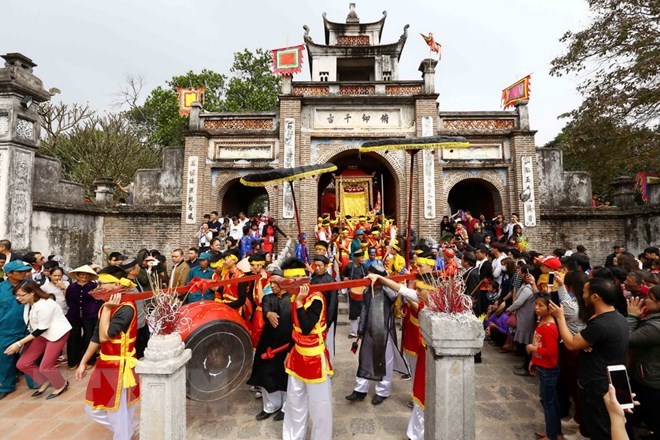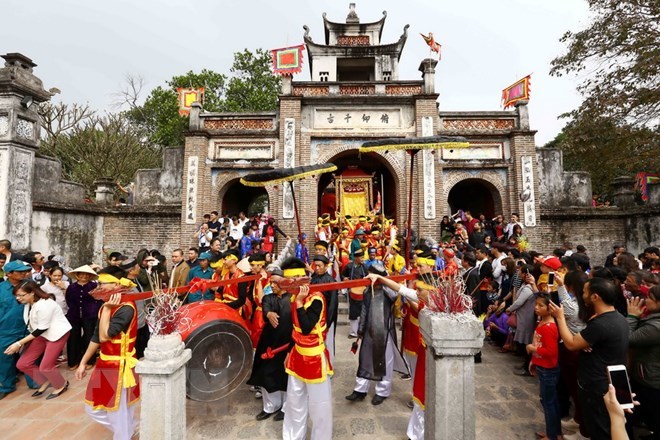
The Khong gian Viet (Viet space) display area was officially put into operation in the Co Loa Citadel on February 1 as part of efforts to diversify cultural activities in the national historical-cultural relic

A view of Co Loa festival
in 2017 (Source: VNA)
Covering over 2,000 sq.m, the model comprises three wooden houses
and six leaf-tiled cottages designed in traditional style, and over 20 bamboo
booths displaying specialties of Co Loa in particular and those of the Northern
Delta region in general.
Visitors will have a chance to enjoy interesting experience, as well as get
insights into the countryside’s custom, community culture, and handicraft
trade.
Tourist visiting the area will be provided with free tickets from February 1 -
February 21.
During the first four days of operation, many cultural activities are being
arranged, including displays of bonsai trees and handicrafts, traditional art
shows, water puppet performances, and food introduction.
At the end of 2017, the site’s management board introduced the Ca tru
(ceremonial singing) art performed by artisans from the Lo Khe Ca tru club of
Dong Anh district, in the site as part of efforts to preserve the intangible
cultural heritage.
Source: VNA
With an increasingly vibrant and widespread emulation movement aimed at building cultured residential areas and cultured families, Yen Thuy District has been making steady progress toward improving both the material and spiritual well-being of its people, while fostering a civilized, prosperous, beautiful, and progressive community.
Once lacking recreational spaces and community facilities, Residential Group 2 in Quynh Lam Ward (Hoa Binh City) has recently received attention for the construction of a new, spacious, and fully equipped cultural house. The project followed the model of state support combined with public contributions in both labor and funding.
The "All people unite to build cultural life" movement, which has been effectively integrated with Kim Boi district’s socio-economic development goals, is fostering a lively spirit of emulation across local residential areas, hamlets, villages, public agencies, and enterprises. In addition, through the initiative, traditional cultural values are being preserved and promoted, while community solidarity and mutual support in poverty reduction and economic development are being strengthened.
A working delegation of the Hoa Binh provincial People’s Committee led by its Permanent Vice Chairman Nguyen Van Toan on June 11 inspected the progress of a project to build the Mo Muong Cultural Heritage Conservation Space linked to tourism services in Hop Phong commune, Cao Phong district.
Born and growing in the heroic land of Muong Dong, Dinh Thi Kieu Dung, a resident in Bo town of Kim Boi district, in her childhood was nurtured by the sweet lullabies of her grandmother and mother. These melodies deeply imprinted on her soul, becoming an inseparable part of her love for her ethnic group's culture. For over 20 years, this love for her hometown has driven Dung to research, collect, and pass down the cultural values of the Muong people to future generations.
In the final days of May, the Ethnic Art Troupe of Hoa Binh Province organized performances to serve the people in remote, mountainous, and particularly disadvantaged areas within the province. These were not just ordinary artistic shows, but they were the meaningful journeys aimed at spreading cultural values, enhancing the spiritual life of the people and contributing to the preservation of ethnic minority cultural identities.



